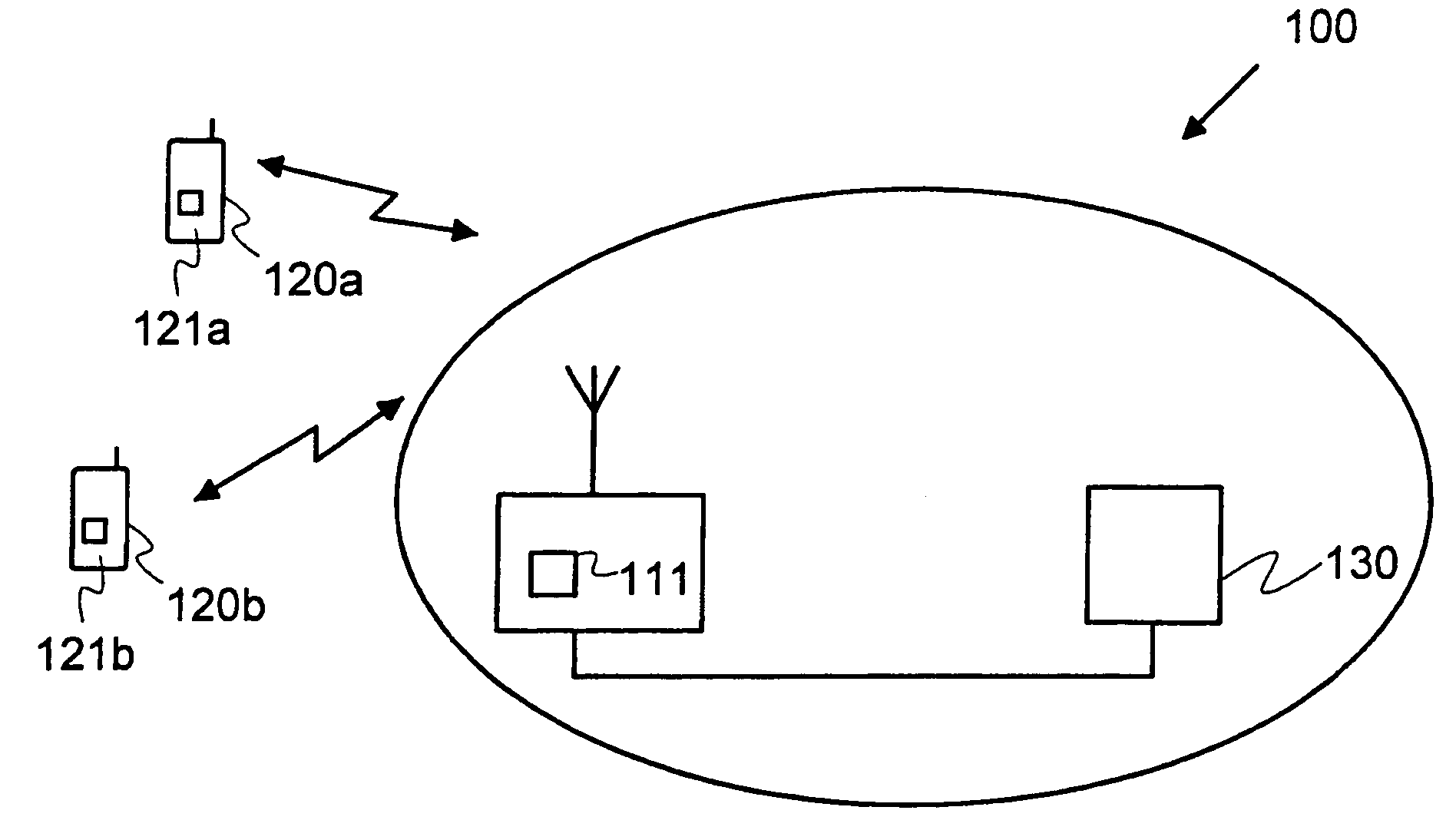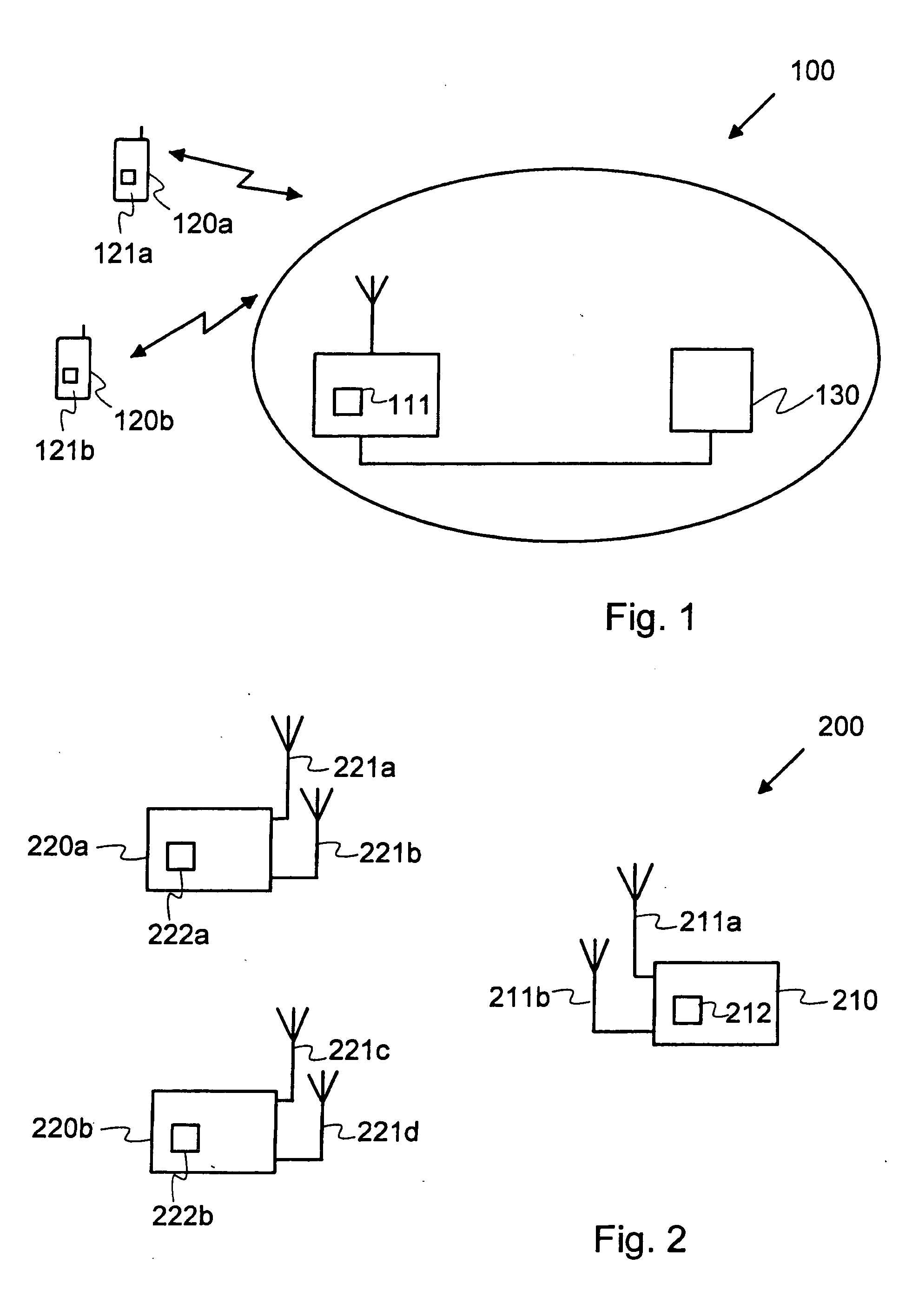Multi-user multicarrier allocation in a communication system
a communication system and multi-user technology, applied in the field of wireless communication systems, can solve the problems of complex allocation of subcarriers to a plurality of users in a communication system, time-consuming, and complex allocation of subcarriers, and achieve the effects of improving spectral efficiency and throughput, reducing complexity, and keeping the computational complexity of subcarrier allocation reasonabl
- Summary
- Abstract
- Description
- Claims
- Application Information
AI Technical Summary
Benefits of technology
Problems solved by technology
Method used
Image
Examples
first embodiment
[0065] The methods, which are indicated in FIG. 6 as “method 2” and “method 3”, are methods according to the invention. In methods 2 and 3, the multicarrier modulation bandwidth is divided into sets of sequential subcarriers, the size of the set being of the form 2p.
[0066] For method 2 in FIG. 6, the size of a set of sequential subcarriers for a sample in the simulation is determined by the above formula for d with F=½. This means that the size of a set is about half of the smallest coherence bandwidth of the N users. For method 3 in FIG. 6, F=1 and the size of a set is about the smallest coherence bandwidth of the N users. The simulation results of method 2 are marked with a thin dashed line and the simulation results of method 3 are marked with a thick dashed line.
[0067] The second reference allocation method is “method 4” in FIG. 6. In this method, subcarriers are allocated individually to the N users and a subcarrier is allocated for each user in turn. Method 4 is thus an alloc...
second embodiment
[0074] The methods indicated in FIG. 6 as “method 5” and “method 6” are methods in accordance with the invention. In methods 5 and 6, the multicarrier modulation bandwidth is divided into a sets of sequential subcarriers, the size of the set being of the form 2p. This is similar to the above discussed methods indicated as methods 2 and 3 in FIG. 6.
[0075] For method 5 in FIG. 6, the size of a set of sequential subcarriers for a sample in the simulation is determined by the above formula for d with F=½. This means that the size of a set is about half of the smallest coherence bandwidth of the N users. For method 6 in FIG. 6, F=1 and the size of a set is about the smallest coherence bandwidth of the N users. The simulation results of method 5 are marked with a thin solid line and the simulation results of method 6 are marked with a thick solid line in FIG. 6.
[0076] The third reference allocation method is “method 7” in FIG. 6. In this method, subcarriers are allocated individually to ...
PUM
 Login to View More
Login to View More Abstract
Description
Claims
Application Information
 Login to View More
Login to View More - R&D
- Intellectual Property
- Life Sciences
- Materials
- Tech Scout
- Unparalleled Data Quality
- Higher Quality Content
- 60% Fewer Hallucinations
Browse by: Latest US Patents, China's latest patents, Technical Efficacy Thesaurus, Application Domain, Technology Topic, Popular Technical Reports.
© 2025 PatSnap. All rights reserved.Legal|Privacy policy|Modern Slavery Act Transparency Statement|Sitemap|About US| Contact US: help@patsnap.com



